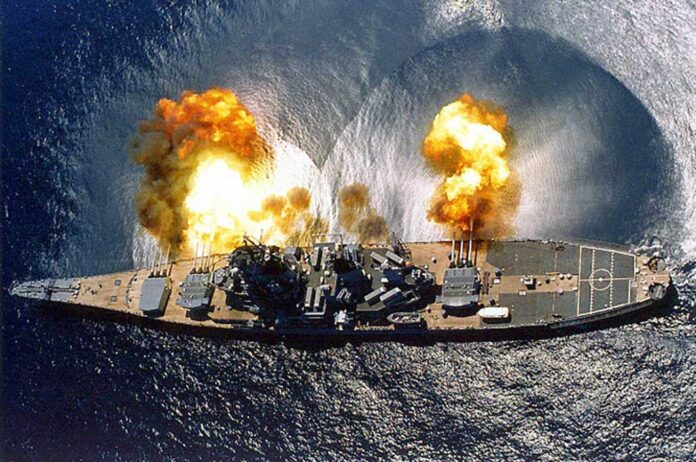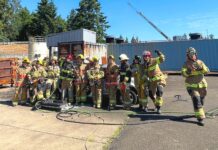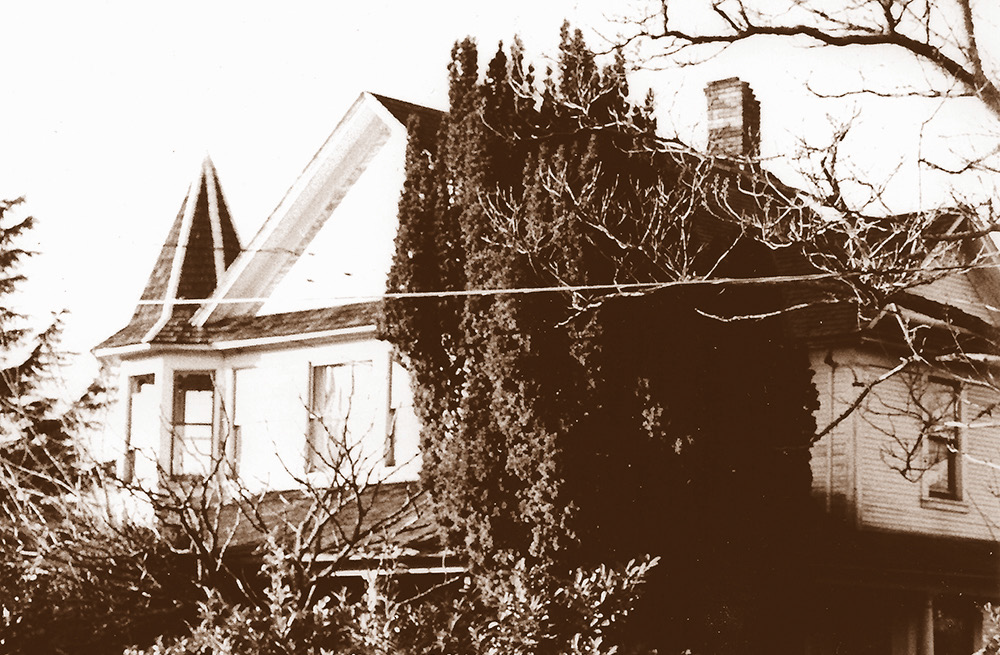The USS Porter had so many incredible mishaps this
WWII Navy Destroyer Crew was ribbed in all Navy Ports
Navy ships normally acquire nicknames and reputations from their accomplishments but a few are remembered by their problems. During World War II, one US ship, Destroyer William D. Porter, DD-579, had an unbelievable string of misfortunate accidents. The worst was accidentally firing a live torpedo at the battleship Iowa during a practice exercise. Even worse, at the time the Iowa was carrying President Franklin Delano Roosevelt, other high ranking US government officials and top military leaders. After that, Porter crewmembers were unkindly greeted with “Don’t Shoot, We’re Republicans” in Navy ports of call.
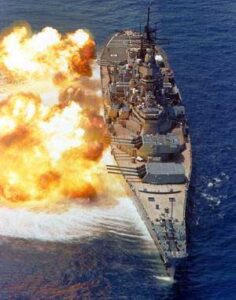
The Iowa was taking FDR across the Atlantic to North Africa in November, 1943, on his way to a secret Big Three Conference in Tehran to meet with Joseph Stalin and Winston Churchill. The Porter had been commissioned four months earlier and with a novice crew, had successfully overcome typical difficulties encountered in rigorous underway and readiness training. Two other destroyers were also assigned to this escort duty. Needless to say, had the torpedo run been successful, world history would have been changed.
Porter’s main armament was ten 21-inch torpedo tubes for accurate and fast running torpedoes carrying 500-pound warheads. She also carried eight anti-aircraft guns, five 5-inch guns, six depth charge projectors and two depth charge tracks. Problems started for Porter on the night before leaving Norfolk with Iowa. While backing down, her anchor ripped apart the railings, life rafts, ship’s boat and other formerly valuable equipment on an adjacent destroyer. All she physically suffered was a scraped anchor.
On the next morning, the four ships started across the Atlantic under strict radio silence. The best defense against German U-boat attacks were silence and speed. The top speed for Porter was 40 miles per hour (35 knots). In the early evening, there was a tremendous explosion. The ships immediately started doing anti-submarine maneuvers which continued until the Porter advised everyone that one of her depth charges had fallen off her stern and exploded. The safety mechanism had not been set, a violation of training instructions.
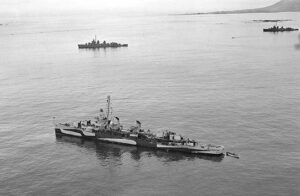
Next, a freak wave crashed over the ship, raking away everything not tied down. It took a man overboard who was never found. Later, the fire room lost power to one of its boilers. Each of these had to be reported to the Iowa.
When the group was East of Bermuda on 14 November; at Roosevelt’s request, Iowa had an anti-aircraft drill to show how she could defend herself. It began by releasing weather balloons to use as targets. It was exciting to see the Iowa’s guns blast away at the balloons, especially for FDR (former Assistant Navy Secretary) and Fleet Admiral Ernest King, Chief of Naval Operations. Meanwhile, the Captain of the Porter sent his crew to battle stations, hoping to gain some favor by shooting down balloons that the Iowa had missed and had drifted into the destroyer’s area.
Then, the three destroyers were instructed to do a torpedo drill, simulating a launch at Iowa. Crewmembers had instructions to install primers in torpedo tubes only for actual combat. Once installed, on a command to fire, the primer would explode, shooting the torpedo toward its target. Unfortunately, the crewmember responsible for tube #3 had forgotten to remove the primer. On the Porter, everything worked fine for the ordered simulated firings for tube’s #1 and #2. Then from tube #3, came the whoooshhhing sound of a successfully launched armed torpedo.
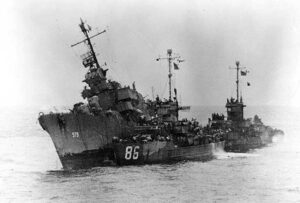
The bridge officer watched the launch in disbelief. He asked his Captain if he had given permission to fire the torpedo. When the reality of the situation sunk in, Porter tried to signal Iowa about the incoming torpedo. However, due to radio silence, he used a signal lamp instead. Unfortunately, the first message said the torpedo was heading in another direction. The second said the torpedo was going full speed in reverse.
To alert Iowa of the danger, Porter’s Captain broke radio silence. His radio operator sent “Lion (code word for Iowa), come right”. Iowa’s radio operator responded by asking the “silence” offender to identify itself. Meanwhile the torpedo continued towards Iowa.
Finally, Iowa turned hard. When FDR, who was on the Iowa’s bridge, learned of the approaching torpedo, he had his wheelchair moved to the railing so he could see what was coming. His Secret Service guard drew his pistol to shoot the torpedo. Shortly thereafter, the torpedo was detonated by the wash kicked up by the battleship’s increased speed, some 3,000 yards astern of the Iowa.
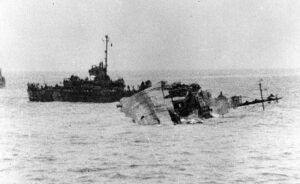
Meanwhile Iowa trained her guns on Porter, concerned that the ship might have been involved in an assassination plot. The Porter’s Captain and entire crew were arrested and ordered to Bermuda where they were taken into custody by Marines. A Torpedo Man (navy rating) eventually confessed to having left the primer in the torpedo tube and was sentenced to 14 years of hard labor. However President Roosevelt overruled, saying that no punishment be handed out to the Torpedo Man for what clearly was an accident. The Captain’s (known to be on “promotion fast track”) career was effectively over. He and the other ship officers were sent to obscure shore assignments.
The destroyer was next sent to Aleutian Islands where it had antisubmarine escort duty, and where many thought it could do no damage. She remained there for nine months until assigned to the Western Pacific. Reportedly, she left her calling card by accidentally firing a five-inch shell in the front yard flower garden of the American Base Commander. Porter distinguished herself when joining the Philippine invasion forces, shooting down several attacking Japanese aircraft while escorting ships. She also provided fire support against shore batteries and to support forces ashore at the Lingayen Gulf campaign. Reportedly, she also shot down three American planes but friendly fire was a known problem then.
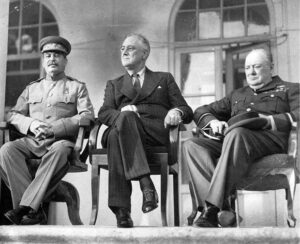
Porter again distinguished herself in the Battle of Okinawa where she had many more plane kills. Between May 5 and June 9, 1945, Porter fired more than 8,500 five-inch shells, both at shore targets and enemy planes. She is credited with five plane kills during that period. By then her crew was accustomed to being ribbed “Don’t shoot, We’re Republican”. But the crew of the Destroyer USS Luce was not as nice with their language after Porter accidentally shot up her side and superstructure with gunfire.
On June 10, 1945, Porter suffered a kamikaze “underwater” attack. An obsolete Japanese “Val” dive bomber evaded radar detection because it was made almost entirely of wood and canvas (no metal). It came unexpectedly out of the clouds. The explosive-laden plane did not hit the destroyer but after splashing in the ocean, went directly under the Porter where it exploded. The Porter was lifted out of the water and dropped back again. She lost power and had extensive damage. The crew struggled for three hours to repair damage and put out fires until the Captain gave the orders to abandon ship. Not long after all the crew was recovered aboard accompanying ships, the Porter heeled over to starboard and sank by the stern into 2,400 feet of water. Remarkably, the crew had no major injuries. Despite all the indignities suffered over the years by various mishaps, the Destroyer William D. Porter was able to safely deliver her last crew on her final cruise.

